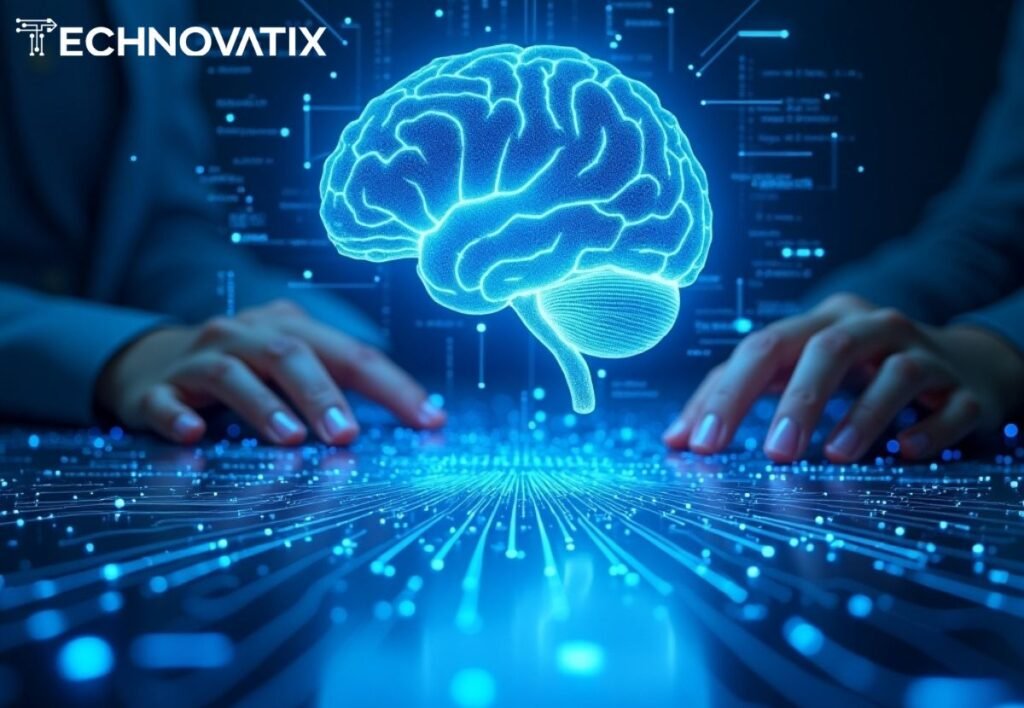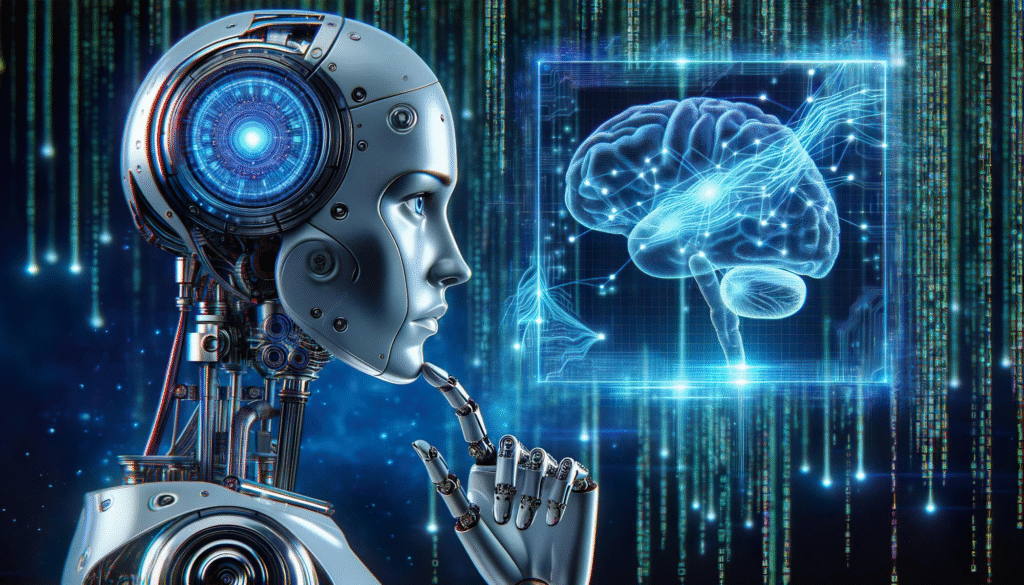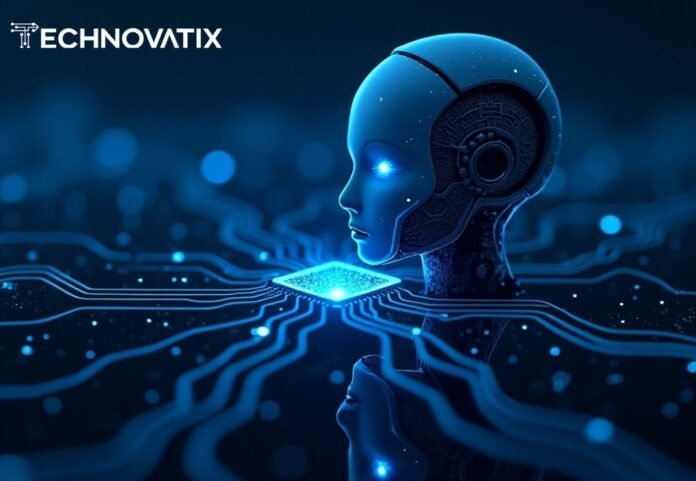Artificial intelligence is shaping the way we live and work. But not all AI is created with the same goals. Blue Artificial Intelligence focuses on building technology that people can trust. It puts human-first AI at the center. This approach values fairness, transparency, and accountability above pure efficiency. In the United States, where AI is influencing healthcare, finance, and even government decisions, a trustworthy system has never been more important
With growing concerns about privacy, trust, and misuse, Blue Artificial Intelligence represents a shift toward innovation that protects human rights and values. It’s not just smarter AI — it’s AI built for a safer, more inclusive future.
What Is Blue Artificial Intelligence?
Blue Artificial Intelligence is a vision for ethical AI systems that work for the benefit of people. It’s not about the color but about creating AI built on trust. Blue AI uses transparent AI models and explainable AI decisions so people understand how outcomes are made.
Instead of being driven only by speed or profit, Blue AI makes space for fairness, respect, and responsibility. This means using AI fairness principles and responsible AI design to reduce harm, protect rights, and make technology more human. In the USA, where data privacy and bias are major issues, this approach sets a new standard.
The Core Principles Behind Blue AI

At its heart, Blue AI follows several key values. First, AI accountability ensures there’s always a responsible party behind the technology. Second, bias-free AI tools aim to prevent unfair treatment. These tools rely on AI bias detection methods to find and fix unfair patterns in data.
Blue AI also promotes privacy-preserving AI so personal information stays safe. It supports inclusive technology solutions that work for everyone, regardless of background. These principles make Blue AI an example of AI that respects human rights and encourage AI with human values in every application.
Ethics in Action, Not Just Words
Saying you care about fairness is one thing. Designing systems that prove it every day is another. Blue Artificial Intelligence focuses on turning those values into practical rules for developers and companies. This ensures good intentions become real-world impact.
Why the World Needs Ethical AI Now

The growth of AI has brought new opportunities but also serious challenges. In the United States, systems that screen job applicants, make medical predictions, or even help judges in court must be free from bias. Without ethical AI systems, these tools can harm instead of help.
Blue AI addresses these concerns by using safe and transparent algorithms. It also supports AI ethics in business so companies think about long-term trust, not just short-term gains. For a country like the USA, this could mean fewer legal disputes and more public confidence in technology.
Real Risks Without Ethic
When AI decisions are hidden or unfair, they can destroy trust overnight. From wrongful loan rejections to unfair hiring practices, the damage can be personal and permanent. Blue AI aims to stop these risks before they happen.
Key Technologies Driving Blue AI
Several innovations make Blue AI possible. One is federated learning and privacy, which lets AI learn from data without moving it from its source. This improves security while keeping personal details private. Another is trustworthy machine learning, where models are designed to be checked and understood by humans.
There’s also a focus on explainable AI decisions. In sectors like healthcare or finance, knowing how a decision was made is critical. Quantum-safe security is another layer, protecting data even from future computing threats. Together, these tools push AI toward socially responsible AI innovation.
Technology With Human Purpos
Every innovation in Blue AI serves a human need. It’s not technology for the sake of technology—it’s AI for positive social change. This mindset ensures that new tools don’t just impress engineers but actually make life better for real people.
How Blue AI Differs from Traditional AI
The main difference is in priorities. Traditional AI often chases efficiency and speed. Blue AI, on the other hand, focuses on human-first AI and ethical outcomes. This shift changes how systems are built and deployed.
| Feature | Traditional AI | Blue AI |
|---|---|---|
| Goal | Efficiency, cost-saving | AI built on trust |
| Transparency | Low | Transparent AI models |
| Accountability | Weak | AI accountability |
| Bias control | Reactive | Bias-free AI tools |
| Privacy | Optional | Privacy-preserving AI |
This change makes a real difference in the way people experience technology.
Benefits of Adopting Blue Artificial Intelligence

When organizations in the USA adopt Blue Artificial Intelligence, they gain more than good press. They earn public trust. People are more willing to use systems they believe are fair and honest. This is especially true in sectors like banking or health, where errors can be costly.
Another benefit is regulatory readiness. With laws and guidelines on the rise, responsible AI design helps avoid penalties. Companies also discover that sustainable and green AI solutions not only meet ethical goals but save resources in the long term. This builds a stronger, more loyal user base.
Trust Is a Competitive Edge
In today’s market, being ethical isn’t just “nice to have.” It’s a business advantage. Companies that adopt Blue AI often see higher customer retention and stronger brand loyalty compared to competitors using black-box systems.
Challenges and Limitations of Blue Artificial Intelligence
Creating ethical AI systems isn’t easy. It often costs more to design and test for fairness. Smaller companies may struggle to match larger ones in this effort.
Another challenge is technical complexity. Building safe and transparent algorithms takes skill and time. In the USA, the rapid pace of AI development means these challenges must be met without slowing innovation. Even so, AI fairness principles must remain non-negotiable.
Real-World Examples of Blue AI in Action
Some US-based companies are already leading the way. IBM’s Watson Health uses bias-free AI tools to improve healthcare decisions while protecting patient privacy. Microsoft has built responsible AI design into its products, ensuring AI accountability.
Government agencies are testing AI ethics in business guidelines for public sector projects. These examples show that AI for positive social change is not just theory—it’s already happening.
Case Study: IBM Watson Health
By applying AI bias detection methods to medical diagnostics, IBM Watson Health reduces the chance of biased treatment plans. This is a real-world proof that Blue Artificial Intelligence can save lives while respecting privacy and ethics.
The Role of Blue AI in Regulation and Policy

Blue AI aligns with national and global regulations. In the USA, the NIST AI Risk Management Framework supports trustworthy machine learning and fairness testing. Federal initiatives also promote inclusive technology solutions that avoid discrimination.
Internationally, the approach echoes the EU AI Act. But the USA’s focus is on encouraging innovation alongside ethics, creating a balance between technology growth and public trust.
The Future of Blue Artificial Intelligence
The coming years could see Blue Artificial Intelligence become the norm rather than the exception. Education programs will teach developers AI with human values as a standard. More startups will focus on AI for positive social change.
New tools will combine privacy-preserving AI with blockchain to create safe and transparent algorithms. In the USA, these changes could set the global standard for socially responsible AI innovation.
Final Thoughts
Blue Artificial Intelligence isn’t just a concept — it’s a movement reshaping how we think about technology. It calls for ethical AI systems that put people first, protect rights, and respect values. It demands AI built on trust, designed with care, and guided by strong AI fairness principles so that bias and discrimination have no place in decision-making.
In the USA, where trust in technology is more important than ever, this approach offers a pathway to a safer, more transparent digital future. By combining innovation with responsibility, Blue Artificial Intelligence can ensure AI becomes a tool for progress, inclusion, and positive change — not just profit or power. The choice to embrace it now could define the kind of future we build for generations to come

